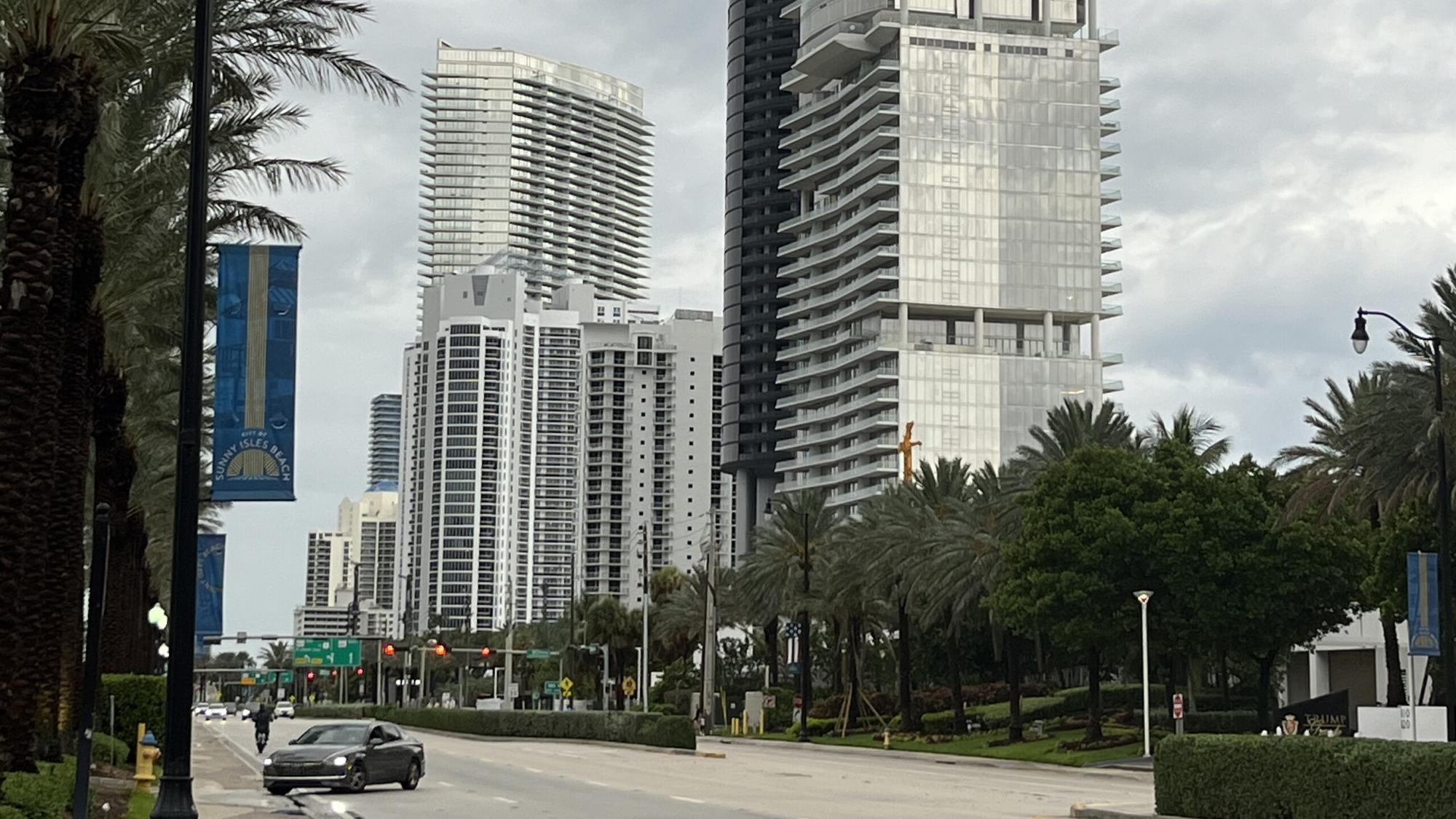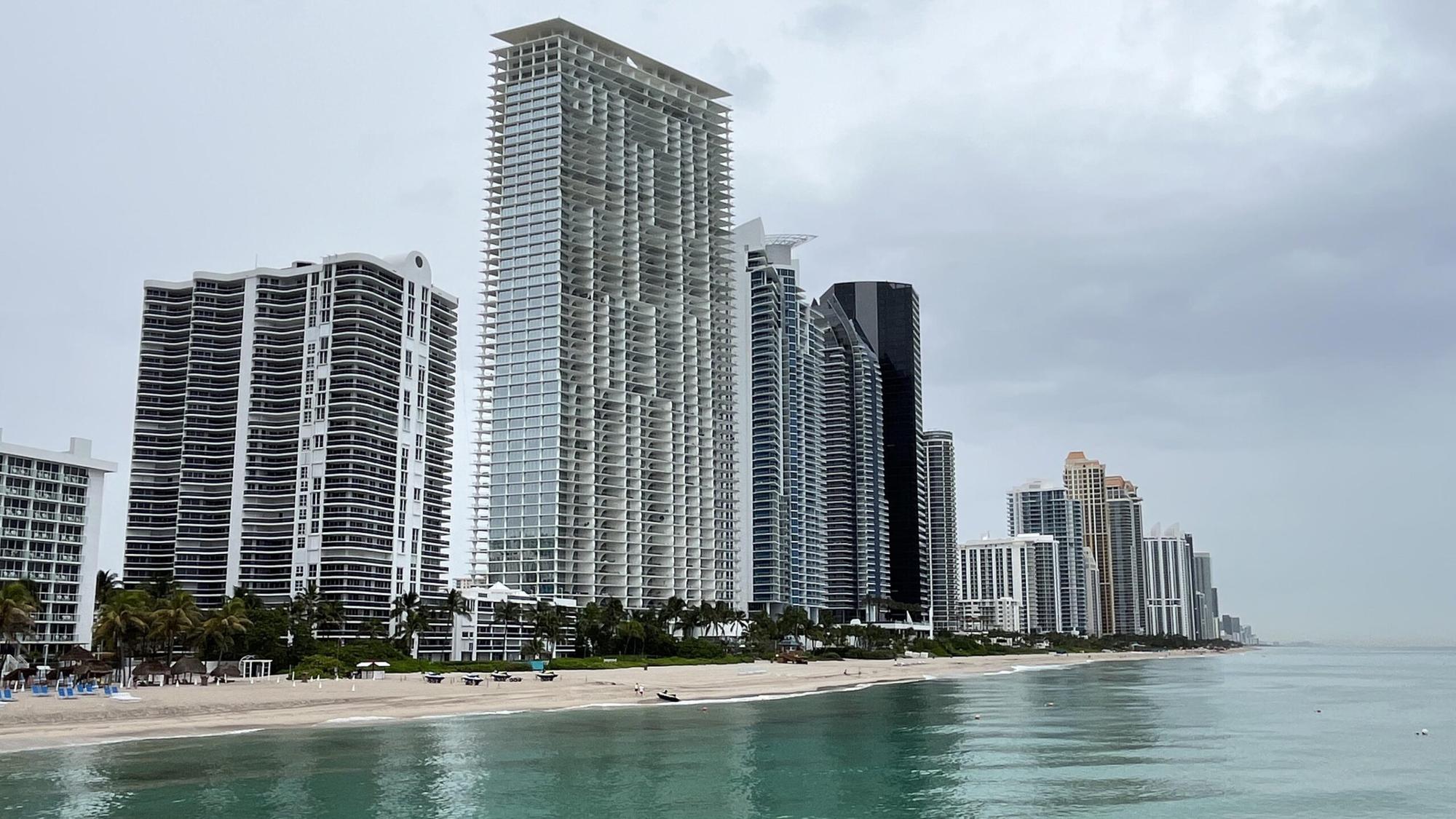Miami’s oceanfront skyscrapers are facing an unsettling reality: subsidence. Following the tragic collapse of the Champlain Towers South condominium in Surfside in 2021, which claimed 98 lives, increased scrutiny has been placed on Miami’s high-rise shoreline. Recent studies now reveal unexpected levels of sinking among many of the city’s prominent luxury buildings, raising alarms about the long-term stability of these structures.
Key Findings on Subsidence in Miami
A study published in Earth and Space Science utilized satellite data collected between 2016 and 2023 to measure ground displacement along Miami’s coastline. Researchers identified subsidence rates ranging from 2 cm to 8 cm in several high-rise buildings, including well-known properties such as:
- Porsche Design Tower
- Trump Tower III
- Trump International Beach Resort
One of the most affected areas, Sunny Isles Beach, exhibited continuous subsidence in over 70% of its newly constructed buildings, highlighting the vulnerability of this beachfront neighborhood.
Causes of Subsidence
The study suggests multiple factors contributing to the observed sinking:
- Building Weight:
- Recently constructed high-rises exert immense pressure on the underlying sandy limestone, which is prone to compaction.
- Construction Vibrations:
- Vibrations from heavy machinery during construction can destabilize the ground, exacerbating subsidence.
- Groundwater Movement:
- Fluctuations in groundwater levels, coupled with tidal flows, may create voids in the porous limestone, leading to gradual sinking.
- Environmental Influences:
- Rising sea levels and increased flooding, driven by climate change, are likely amplifying the natural vulnerabilities of South Florida’s geology.
Sunny Isles Beach: A Hotspot for Subsidence
Sunny Isles Beach stands out as a subsidence hotspot. This affluent beachfront community, known for its luxury high-rises, has seen a surge in construction over the past decade. The concentration of heavy buildings, combined with its sandy limestone foundation, makes it particularly susceptible to sinking. The study notes that the majority of affected buildings in this area are relatively new, indicating that subsidence could be directly linked to their construction.
Broader Implications for Miami
The findings raise serious questions about the long-term viability of Miami’s coastal high-rises. Key concerns include:
- Structural Integrity: Continuous subsidence could lead to cracking, misalignment, and weakening of building foundations, increasing the risk of catastrophic failures.
- Economic Impact: Repairs and retrofitting for affected buildings may cost millions, potentially impacting property values and insurance premiums.
- Safety Concerns: The safety of residents and visitors in these buildings could be compromised if subsidence accelerates without mitigation.
Lessons from the Champlain Towers South Collapse
The collapse of Champlain Towers South in 2021 underscored the importance of regular structural assessments and proactive maintenance. While the exact causes of the collapse included a combination of design flaws and delayed repairs, the tragedy served as a wake-up call to address vulnerabilities in Miami’s building infrastructure. The latest findings on subsidence further emphasize the need for heightened vigilance and regulatory oversight.
Recommendations
To mitigate the risks associated with subsidence, experts recommend:
- Enhanced Monitoring:
- Utilizing satellite-based techniques such as Interferometric Synthetic Aperture Radar (InSAR) to track ground displacement in real-time.
- Stricter Building Codes:
- Updating regulations to account for subsidence risks, particularly in areas with vulnerable geology.
- Ground Surveys:
- Conducting comprehensive geological assessments before new construction projects are approved.
- Public Awareness:
- Informing property owners, developers, and residents about the risks of subsidence and the importance of maintenance.
A Call for Proactive Measures
Miami’s status as a global hub for luxury living and tourism is under threat from the twin challenges of subsidence and climate change. Addressing these issues will require a coordinated effort between scientists, policymakers, developers, and the community. With proactive measures, Miami can safeguard its skyline and protect its residents from future tragedies.
Sources
- Earth and Space Science Journal (2024 Study on Miami Subsidence)
- NOAA Sea Level Rise Projections
- University of Miami Rosenstiel School of Marine, Atmospheric, and Earth Science
- Reports on the Champlain Towers South Collapse


